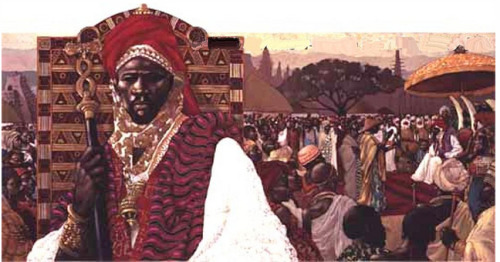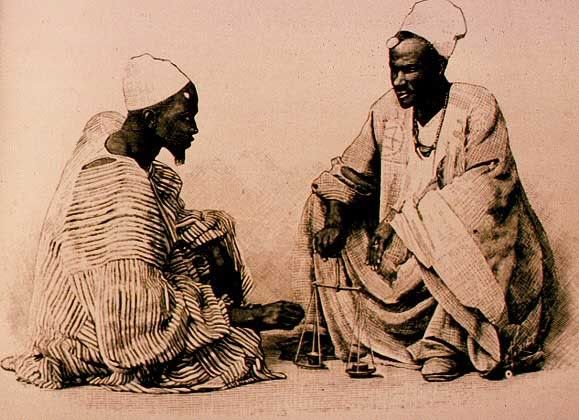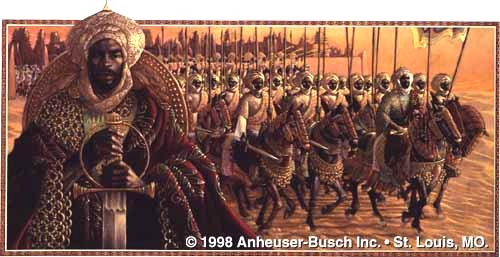Origins
In the years around 700 AD there was a
series of great kingdoms developed in West Africa each of them became powerful
in turn because they controlled the trade of salt and gold trade across the Sahara
desert. The kingdoms that controlled these were Ghana followed by Mali and
eventually Songhai.
The Songhai
The Songhai had settled on both sides of
the middle Niger River. They established a state in the 15th century, which was
a large part of the western Sudan and developed into a powerful civilization.
It was ruled by the dynasty or royal family of the Sonni from the 13 century to
the late 15 century. The capital was at GAO, it was surrounded by a wall. It
was a diverse market place where kola nuts, gold, ivory, slaves, spices, palm
oil and precious woods were traded in exchange for salt, cloth, arms, horses
and copper.

Songhai government
Islam had been introduced to the royal
court of Songhai in 1019, but most peasants remained faithful to their
traditional religion. The monarchy based at GAO ruled with absolute power.
People paid taxes to the king in return for internal and external security. The
royal court was responsible for the administration and the army. Large estates
belonged to nobles. They were worked by slaves that did the fishing, animal
raising for milk, meat and skins, and the agricultural work.

Women in the Songhai Empire
They participated in many actives such as
some were traders and were as important as men. Wealthy women were sometimes
educated and had control over their own property and resources.in the 16-17
centuries poorer women often worked as servants and wealthy households. A few
were slaves and some were kept for sexual services.

Trade
The Songhai had to build and maintain a
large army to keep order. This helped trade to be carried peacefully through
the empire. Trade expanded in Europe which brought in European cloth, horses
and weapons which were traded for slaves, leather goods and ivory from West Africa.
Huge caravans traded goods across the Sahara desert and as a result commercial
cities such as Timbuktu became commercial centers.

Learning and culture
Arab traders brought Islam to Africa in the
8TH century. Many rulers and merchants accepted Islam as their
religion. African kingdoms adopted muslin ideas and learning. As this time
knowledge of mathematics, astronomy and medicine was very advanced. Askia Mohammed
a ruler welcomed Islamic scholars to Timbuktu which was the Centre of learning
for the Songhai.is was 1 of the first universities of the world.

The fall of the Songhai Empire: the Moroccan
invasion in 1591
During the 16TH the Songhai kings
were losing control over their empire. They also didn’t control trade and
struggle for power led to civil wars. But the real reason for the fall on the Songhai
Empire was gunpowder. In 1591 the Moroccan army invaded Songhai and after
defeating the Songhai they plundered cities like GAO and Timbuktu. But after 25
years the Moroccans lost power and the Songhai Empire split into separate independent
kingdoms.
Mais on ne parle pas de leur prospérité
ReplyDeleteThe for this essay
ReplyDeleteThe for this essay
ReplyDelete